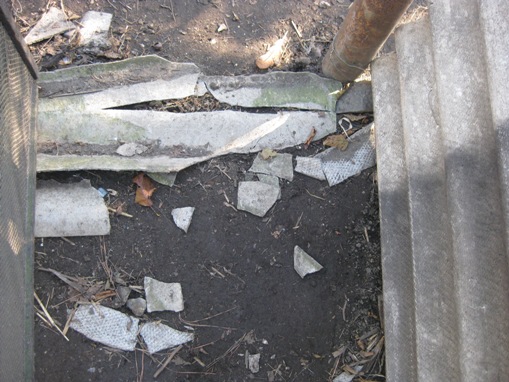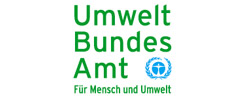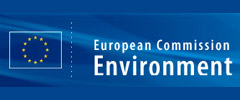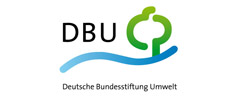International high level conference organised by WECF and BIOM on chrysotile asbestos & health, held in Kyrgyzstan leads to resolution
Kyrgyzstan is in the top ten of chrysotile asbestos users, it is a main building material, and it produces asbestos cement products for domestic use and export
31.05.2011 |WECF news
asbest waste in household
It was the first time that chrysotile asbestos and its health and economic costs were discussed in Kyrgyzstan, so far, it was believed that asbestos was a safe material to use, and that the asbestos factory near Bishkek was an important factor for economic development.
Resolution
All the participants – with the exception of the chrysotile asbestos trade unions – agreed on a resolution calling on the Kyrgzy government to take measures to address the health risks of chrysotile asbestos,The full text of the resolutions:
Final Resolution in English
Final Resolution in Russian
Kyrgyzstan is in the top ten of chrysotile asbestos users, it is a main building material, and it produces asbestos cement products for domestic use and export. Chrysotile asbestos is the main occupational killer worldwide, causing a 100,000 death each year, which is why more than 50 countries in the world have banned its use. Kyrgyz citizens are unaware of the great health risk from chrysotile asbestos and use it without any protection in their homes and yards, schools and playgrounds.
The 1 day conference was divided in 6 main thematic sessions and an opening. Mr Toktoraliev, the director of the Kyrgyz Agency for Environment and Forest, welcomed the Kyrgyz and international participants and highlighted the importance of international environmental agreements such as the Rotterdam Convention. Kyrgyzstan belongs to the first group of founding countries to ratify the Rotterdam Convention. Mr. Holger Gren, the Ambassador of Germany to Kyrgyzstan, conveyed the interest of Germany to share the painful lessons learned from asbestos, and to support Kyrgyzstan with starting a dialogue on this issue. The representative of the European Commission Mr Tom Massie confirmed that the European Union is willing to share its lessons on asbestos. Both Germany and the EU are co-funders of the event and the 2 year project on asbestos and the Rotterdam Convention implemented by WECF and BIOM.
The first session looked at the Rotterdam Convention implementation in Kyrgyzstan, and addressed the fears of industry that a listing of chrysotile asbestos would not mean increased costs or blacklisting. Don Cooper, co-coordinator of the Rotterdam Convention Secretariat, explained that a listing on Annex 3 means nothing more than that countries inform each over before exporting hazardous chemicals to each other, based on the principle of prior informed consent. The representatives of chrysotile asbestos industry argued that chrysotile was not a hazardous substance. Don Cooper responded that the Rotterdam Convention has a technical body, the chemical review committee, which brings together the world wide science regarding a substance which has been proposed for listing, and then unanimously gives advice. The committee, based on worldwide scientific consensus, has recommended to that chrysotile asbestos should be listed based on its great human carcinogenic potential.
The second session focussed on the results of the inventory on asbestos made by the NGO Biom. This inventory is the first-ever independent study about asbestos use and the main asbestos cement factory Kant in the Chu valley. The inventory is available here. The study shows the great lack of information, in particular on the health effects of asbestos use on users and workers. The director of Kant factory defended that his workers are regularly examined and that they have no health effects from working with asbestos, he said they were examined by the independent university hospital. A medical professor from the same university hospital confirmed the constrary, that no workers of Kant had been examined for the last 10 years. When asked how the Kant company was planning to respond to the shrinking worldwide market for chrysotile asbestos, - for example by developing alternatives – it responded there was no plans for this. One of the issues might be that part of the shareholders are from Kazakhstan, and that Kazakhstan unlike Kyrgyzstan, has a large asbestos mine.
The third session focussed on the health risks of chrysotile asbestos. Mr. Kim, asbestos expert of the World Health Organisation, presented how global peer reviewed scientific studies show that chrysotile asbestos is proven to cause mesolethioma cancer, lung cancer, cancer of the larynx and even of the ovaries. He explained that death is almost inevitable and occurs very fast, but after a longer period of latency, between 10 to 30 years, which is why it has taken so long to link the cause to the effect. 4 scientists from Russia, Kazakhstan and Kyrgyzstan presented their non-peer reviewed studies which tried to show that the global scientific consensus is wrong, and that chrysotile is not a potent carcinogenic. The Russian researcher who works for the asbestos industry, explained that in the entire city of “asbest”, where the largest Russian asbest mine and asbest production is based, there have been only 6 cases of asbestosis in the last decades.
Sascha Gabizon, Director of WECF, presented laboratory results of chrysotile asbestos bought in the market. WECF had done this because its local partners were convinced that the Russian and Kyrgyz asbestos were “safe”. The laboratory test showed that the asbestos is exactly the same as the one which has been banned in over 50 countries of the world. WECF also presented its project work on asbestos in Kazakhstan, where laboratories had been visited, and tests of asbestos exposure in the air had been taken, from which it appeared that there was not one laboratory in the country able of measuring correctly asbestos exposure. Also, with a lack of a national cancer registry and an outdated occupational health system it is no wonder that there is no information on asbestos diseases. WECF also highlighted the role of the asbestos industry, its unethical practices, its many semi scientific studies and how it tried to use the World Trade Organisation to stop asbestos bans, but unsuccessfully so; countries have to right to protect their populations health.
The fourth session focussed on substitutes to asbestos, as one of the main concerns of Kyrgyz citizen’s is how to find affordable alternatives to asbestos, in particular for roofing and wall slates. Rostom Gamisonia, director of the Rural Community Development Agency, presented 40 alternatives for asbestos in roofing, slates, pipes, tanks etc. and showed how his agency has build a number of building using alternatives such as ceramic roofing slates and straw-bale-clay wall buildings. The chrysotile asbestos producers mocked that building an airport with straw-bale technology seems impossible, but Gamisonia gave examples of large constructions of straw-bale and of their longlevity. Sascha Gabizon of WECF presented a few examples of companies which produce asbestos alternatives for roofing as this is the main use in Kyrgyzstan. Products ranged from very low cost (less then asbestos) cellulose-asphalt roofing slates produced by community workshops in Brazil, to large scale production on PVA slates in China and Japan, ceramic tiles in Thailand and grass-roofs in Switzerland. Of course alternatives should have been tested on their health effects, and should be clearly better for human health then asbestos.
The fifth session focussed on the costs of asbestos. Alexander Nies of the Ministry of Environment of Germany presented the sad case of his country, where each year thousands of people die from asbestos, mostly chrysotile. Despite the fact that chrysotile has been forbidden since more than 15 years, the number of asbestos death continue to rise. It is hoped, but unsure, that the peak of asbestos death will be reached in the coming years. The cost of pensions and insurance payments to asbestos victims costs economy costs billions of Euro's. These costs exclude the cost of asbestos abatement. According to Sascha Gabizon, in the Netherlands it has been estimated that the total cost to the Dutch economy will be 67 billion euro. Professor Emil Shukurov gave his view on the moral costs to society and even the aesthetic cost from using asbestos.
The final session was the negotiation session which lead to the common resolution. Chaired by Germany, the session worked with a draft resolution as prepared by the organising partners from civil society, WECF and BIOM, and concluded in a common resolution supported by all participants with the exception of the chrysotile trade unions which felt that the entire resolution was “anti chrysotile”. A representative of the ministry of economic affairs mentioned that it was akward that the trade unions did not even want to support the call for better occupation health and safety programmes for workers in asbestos companies.
Asbestos a sensitive issue
Asbestos is a sensitive issue in Kyrgyzstan. Independent information particularly on the issue asbestos and health risks are hardly available. Public and even many non governmental organisations are not aware of the hazardous health effects of asbestos. Currently asbestos containing materials are used without restriction in public buildings like hospitals, schools and kindergartens, and in many consumer products like brakes and building materials in Kyrgyzstan.
The UN organisation ILO (International Labor Organisation) estimates, that each year worldwide about 100.000 people die from asbestos related diseases. The International Agency for Research on Cancer (IARC) and WHO has reconfirmed the classification of chrysotile asbestos as human carcinogen and confirmed that chrysotile asbestos causes mesothelioma and cancer of the lungs, the larynx, and the ovary.
The High Level International Expert Conference on “Asbestos - Policies and Practices in Kyrgyzstan and International Chemicals Policy” was organized by the European Environment- and Women's Network WECF - Women in Europe for a Common Future and their Kyrgyz partner organisation BIOM. The conference was funded by the European Commission Kyrgyzstan and the Federal Environment Ministry of Germany.
Related News
Meet the Winners of the Gender Just Climate Solutions Award at COP24
On the 70th anniversary of the Universal Declaration of Human Rights, we awarded Gender Just Climate Solutions Winners at the climate negotiations in Katowice, Poland
11.12.2018
Invitation: Gender Just Climate Solutions Award 2018
10 December, COP24 Katowice
04.12.2018
Getting to the Future We Want
4-7 November, Brussels: European Environmental Bureau’s (EEB) Annual Conference
12.11.2018
GoodFood4All
WECF and partners all over Europe start GoodFood4All Campaign
06.11.2018
#Ruralwomen: join our Women2030 campaign!
15.10.2018






































